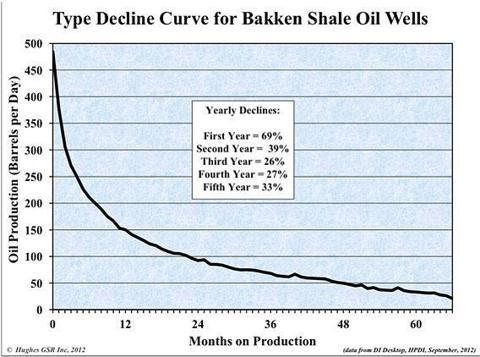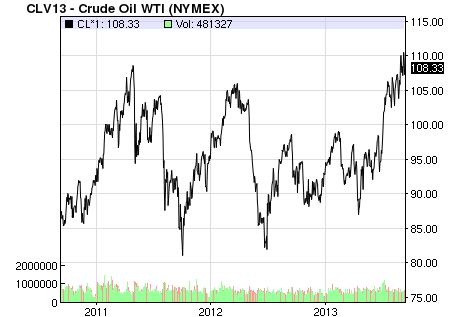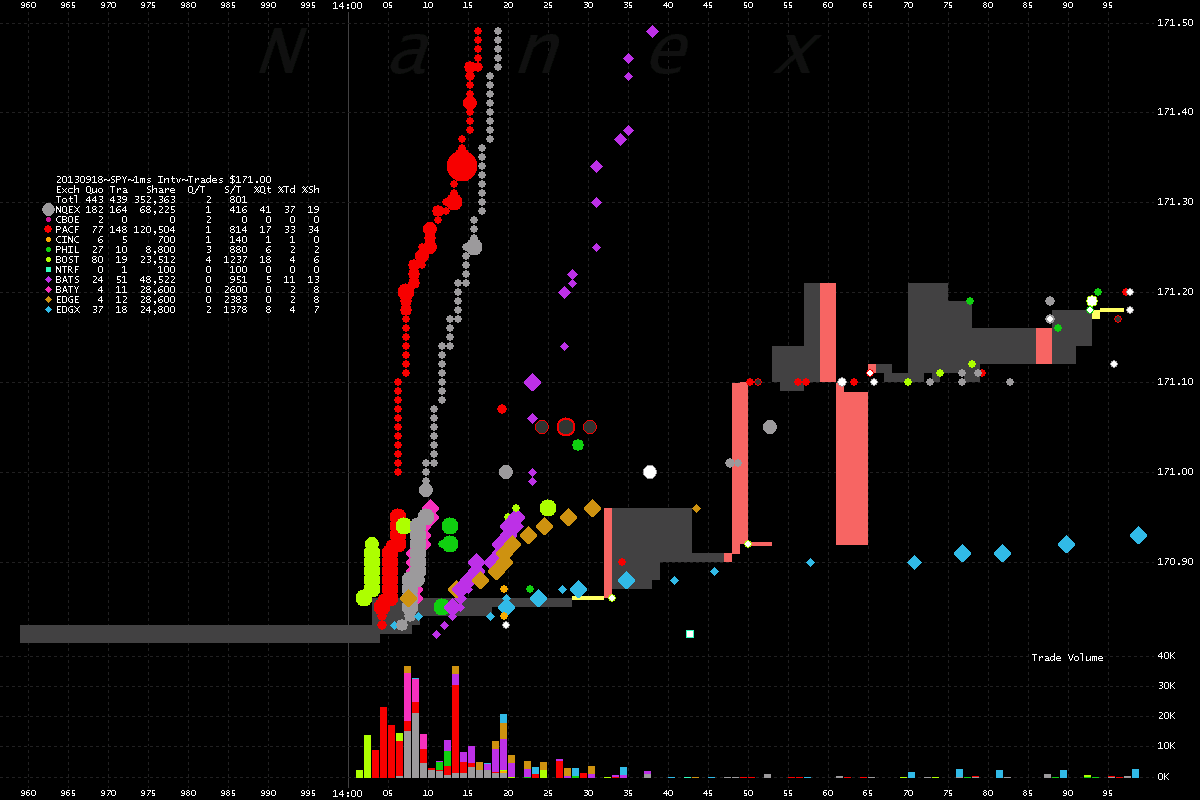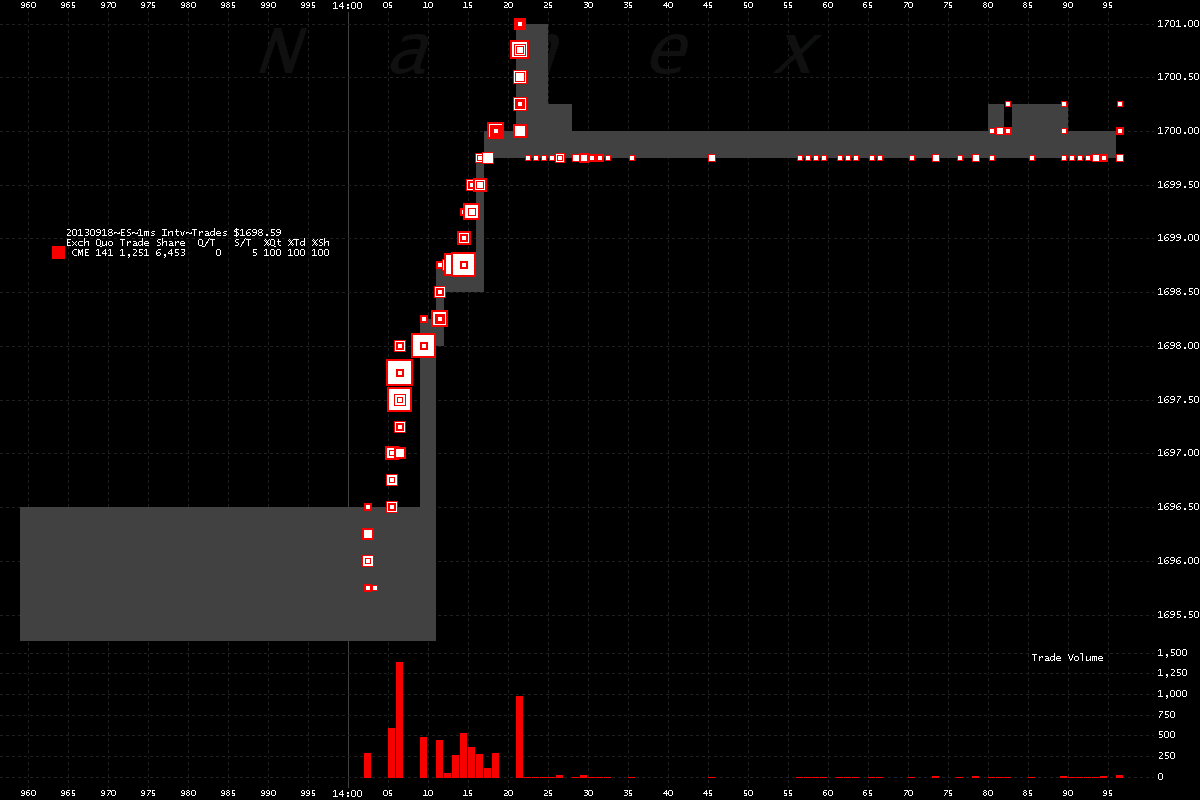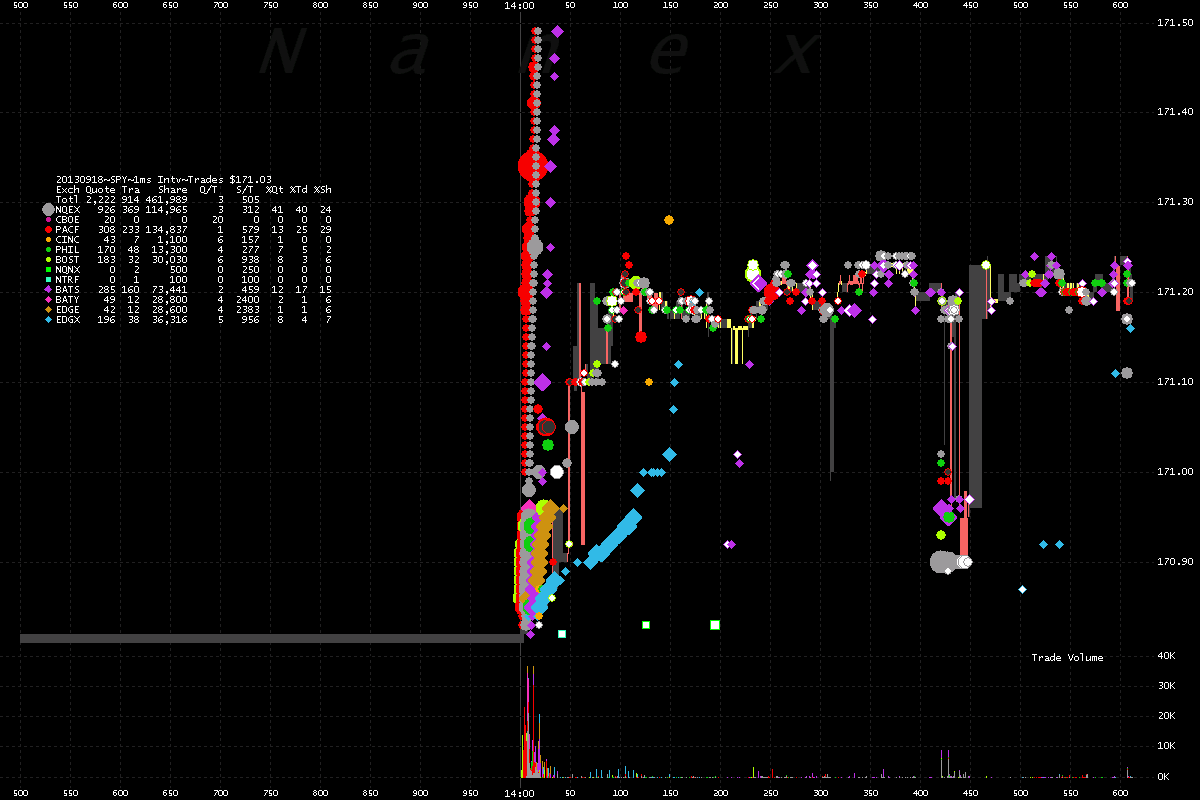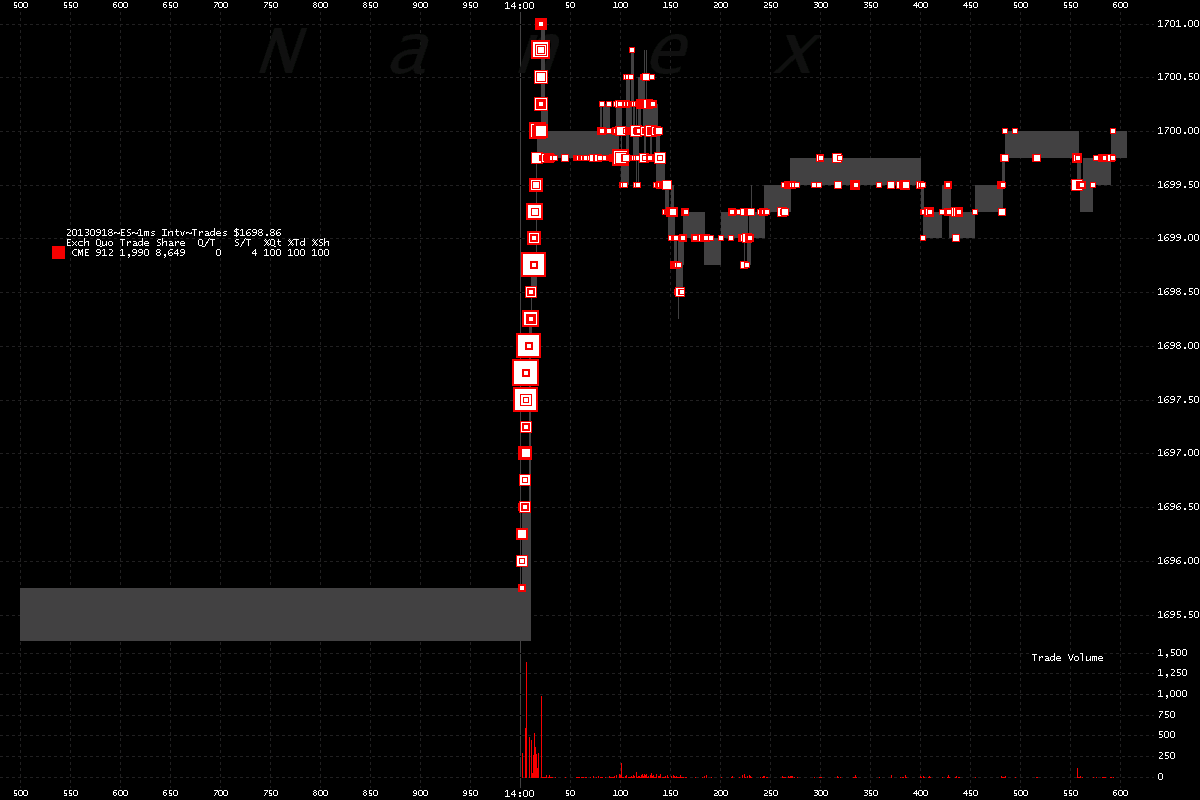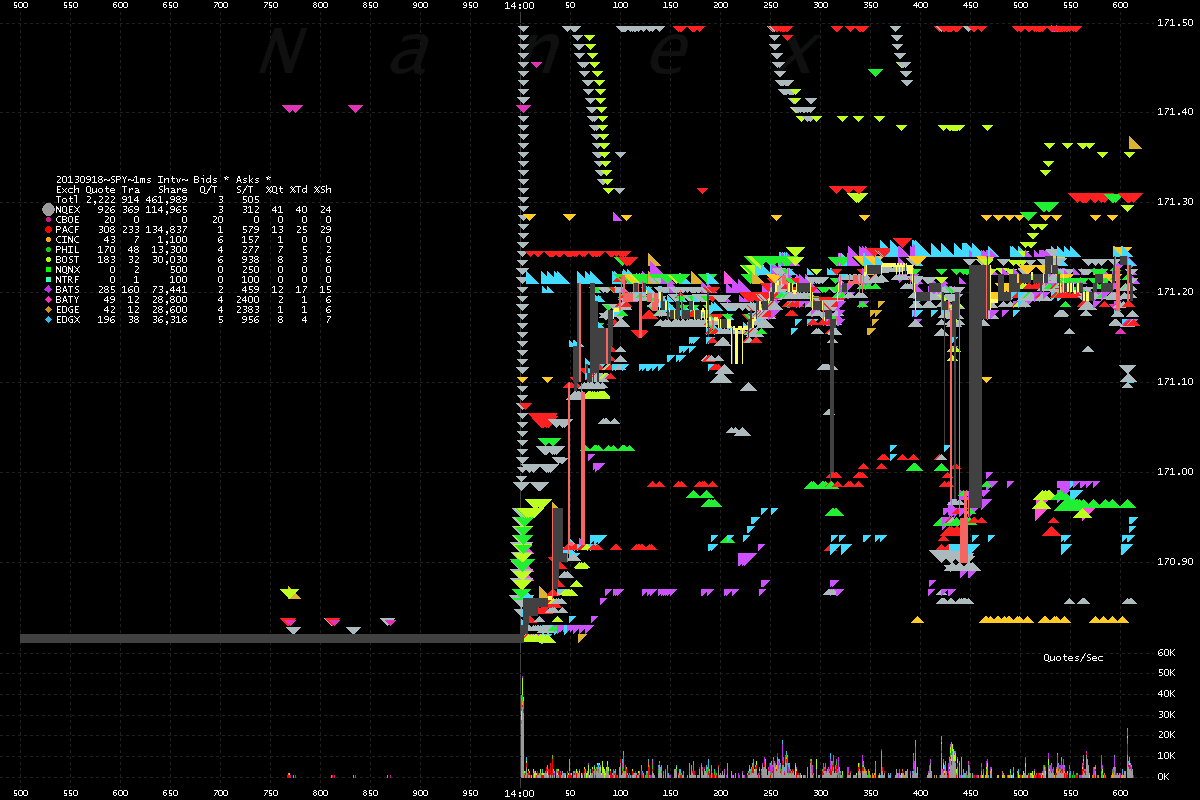The same day that the Federal Reserve's Federal Open Market Committee announced last week that the Fed would continue to buy $40 billion in mortgage-backed securities (MBSs) and $45 billion in U.S. Treasury securities per month, the Fed also released its latest weekly accounting sheet indicating that it had already accumulated more Treasuries and MBSs than the total value of the publicly held U.S. government debt amassed by all U.S. presidents from George Washington though Bill Clinton.
Since the beginning of September 2008, in fact, the Fed's ownership of Treasury securities and MBSs has increased seven fold.
As of the close of business Thursday, the Fed said, it owned approximately $2,052,055,000,000 in U.S. Treasury securities and approximately $1,339,771,000,000 in mortgage-backed securities—for a combined total of about $3,391,826,000,000 in Treasury securities and MBSs.
The U.S. Treasury divides the U.S. government debt into two parts: debt held by the public, which includes publicly traded Treasury securities such as Treasury bills, notes and bonds, and intra-governmental debt, which is money the Treasury has borrowed out of the Social Security trust fund and other government trust funds and then used to pay current expenses.
As of the opening of business back on Nov. 23, 2001, according to the Daily Treasury Statement, the federal government’s total debt held by the public was $3,383,605,000,000. (By the close of business that day, the total debt held by the public would increase to 3,406,661,000,000.) The $3,383,605,000,000 in U.S. Treasury debt held by the public as the morning of Nov. 23, 2001, represented the total publicly held debt the federal government had accumulated until that date from the moment the Treasury first opened during the presidency of George Washington.
The $3,383,605,000,000 the Treasury owed to the public as of the morning of Nov. 23, 2001 was less than the $3,391,826,000,000 in Treasury and mortgage-backed securities owned by the Federal Reserve as of the close of business last Thursday.
Thus the Federal Reserve now owns more debt in the form of U.S. Treasury securities and MBSs than the sum total of the publicly held debt that the U.S. government accumulated from George Washington’s administration into November 2001, during President George W. Bush’s first term.
The mortgage-backed securities owned by the Fed are those that have been issued and guaranteed by Fannie Mae, Freddie Mac and Ginnie Mae. Ginnie Mae is government-owned corporation operated by the U.S. Department of Housing and Urban Development. Fannie Mae and Freddie Mac are congressionally chartered, government-sponsored enterprises, that are now held in conservatorships by the federal government.
“Fannie Mae and Freddie Mac are chartered by Congress as government-sponsored enterprises (GSEs) to provide liquidity in the mortgage market and to promote homeownership for underserved groups and locations,” the Congressional Research Service explained in a report published this August. “They purchase mortgages, guarantee them, and package them in mortgage-backed securities (MBSs), which they either keep as investments or sell to institutional investors. In addition to the GSEs’ guarantees, investors widely believe that MBSs are implicitly guaranteed by the federal government. In 2008, the GSEs’ financial condition had weakened and there were concerns over their ability to meet their obligations on $1.2 trillion in bonds and $3.7 trillion in MBSs that they had guaranteed. In response to the financial risks, the federal government took control of these GSEs in a process known as conservatorship as a means to stabilize the mortgage credit market.”
The federal government first took control of Fannie Mae and Freddie Mac on Sunday, Sept. 7, 2008. In its last weekly accounting sheet released before that, on Thursday, Sept. 4, 2008, the Fed said that it owned $479.726 billion in U.S. Treasury securities. That sheet did not even include a line item for mortgage-backed securities.
The Fed’s combined ownership of $3,391,826,000,000 in Treasury securities and mortgage-backed securities is now more than 7 times as great as the $479.726 billion in Treasury securities it owned five years ago before the takeover of Fannie and Freddie.
Of the ten members of the Federal Open Market Committee who voted on whether the Fed should continue purchasing $40 billion in MBS each month and $45 billion in Treasury securities, only one voted no. That was Esther George, who is president of the Federal Reserve Bank of Kansas City.
The Fed’s press release announcing the vote said George voted against the continued buying of Treasury securities and MBS because she was “concerned that the continued high level of monetary accommodation increased the risks of future economic and financial imbalances and, over time, could cause an increase in long-term inflation expectations.”
- See more at:
http://cnsnews.com/news/article/terence-p-jeffrey/339t-quantitative-explosion-fed-owns-more-treasuries-and-mbss#sthash.lMYAYAJU.toT70JK9.dpuf
The same day that the Federal Reserve's Federal Open Market Committee
announced last week
that the Fed would continue to buy $40 billion in mortgage-backed
securities (MBSs) and $45 billion in U.S. Treasury securities per month,
the Fed also released its
latest weekly accounting sheet
indicating that it had already accumulated more Treasuries and MBSs
than the total value of the publicly held U.S. government debt amassed
by all U.S. presidents from George Washington though Bill Clinton.
Since the beginning of September 2008, in fact, the Fed's ownership of Treasury securities and MBSs has increased seven fold.
As of the close of business Thursday, the Fed said, it owned
approximately $2,052,055,000,000 in U.S. Treasury securities and
approximately $1,339,771,000,000 in mortgage-backed securities—for a
combined total of about $3,391,826,000,000 in Treasury securities and
MBSs.
The U.S. Treasury divides the U.S. government debt into two parts:
debt held by the public, which includes publicly traded Treasury
securities such as Treasury bills, notes and bonds, and
intra-governmental debt, which is money the Treasury has borrowed out of
the Social Security trust fund and other government trust funds and
then used to pay current expenses.
As of the opening of business back on Nov. 23, 2001, according to the
Daily Treasury Statement,
the federal government’s total debt held by the public was
$3,383,605,000,000. (By the close of business that day, the total debt
held by the public would increase to 3,406,661,000,000.) The
$3,383,605,000,000 in U.S. Treasury debt held by the public as the
morning of Nov. 23, 2001, represented the total publicly held debt the
federal government had accumulated until that date from the moment the
Treasury first opened during the presidency of George Washington.
The $3,383,605,000,000 the Treasury owed to the public as of the
morning of Nov. 23, 2001 was less than the $3,391,826,000,000 in
Treasury and mortgage-backed securities owned by the Federal Reserve as
of the close of business last Thursday.
Thus the Federal Reserve now owns more debt in the form of U.S.
Treasury securities and MBSs than the sum total of the publicly held
debt that the U.S. government accumulated from George Washington’s
administration into November 2001, during President George W. Bush’s
first term.
The mortgage-backed securities owned by the Fed are those that have
been issued and guaranteed by Fannie Mae, Freddie Mac and Ginnie Mae.
Ginnie Mae is government-owned corporation operated by the U.S.
Department of Housing and Urban Development. Fannie Mae and Freddie Mac
are congressionally chartered, government-sponsored enterprises, that
are now held in conservatorships by the federal government.
“Fannie Mae and Freddie Mac are chartered by Congress as
government-sponsored enterprises (GSEs) to provide liquidity in the
mortgage market and to promote homeownership for underserved groups and
locations,” the Congressional Research Service explained in a report
published this August. “They purchase mortgages, guarantee them, and
package them in mortgage-backed securities (MBSs), which they either
keep as investments or sell to institutional investors. In addition to
the GSEs’ guarantees, investors widely believe that MBSs are implicitly
guaranteed by the federal government. In 2008, the GSEs’ financial
condition had weakened and there were concerns over their ability to
meet their obligations on $1.2 trillion in bonds and $3.7 trillion in
MBSs that they had guaranteed. In response to the financial risks, the
federal government took control of these GSEs in a process known as
conservatorship as a means to stabilize the mortgage credit market.”
The federal government first took control of Fannie Mae and Freddie Mac on Sunday, Sept. 7, 2008. In its
last weekly accounting sheet
released before that, on Thursday, Sept. 4, 2008, the Fed said that it
owned $479.726 billion in U.S. Treasury securities. That sheet did not
even include a line item for mortgage-backed securities.
The Fed’s combined ownership of $3,391,826,000,000 in Treasury
securities and mortgage-backed securities is now more than 7 times as
great as the $479.726 billion in Treasury securities it owned five years
ago before the takeover of Fannie and Freddie.
Of the ten members of the Federal Open Market Committee who voted on
whether the Fed should continue purchasing $40 billion in MBS each month
and $45 billion in Treasury securities, only one voted no. That was
Esther George, who is president of the Federal Reserve Bank of Kansas
City.
The Fed’s press release announcing the vote said George voted
against the continued buying of Treasury securities and MBS because she
was “concerned that the continued high level of monetary accommodation
increased the risks of future economic and financial imbalances and,
over time, could cause an increase in long-term inflation expectations.”
- See more at:
http://cnsnews.com/news/article/terence-p-jeffrey/339t-quantitative-explosion-fed-owns-more-treasuries-and-mbss#sthash.lMYAYAJU.toT70JK9.dpuf
The same day that the Federal Reserve's Federal Open Market Committee
announced last week
that the Fed would continue to buy $40 billion in mortgage-backed
securities (MBSs) and $45 billion in U.S. Treasury securities per month,
the Fed also released its
latest weekly accounting sheet
indicating that it had already accumulated more Treasuries and MBSs
than the total value of the publicly held U.S. government debt amassed
by all U.S. presidents from George Washington though Bill Clinton.
Since the beginning of September 2008, in fact, the Fed's ownership of Treasury securities and MBSs has increased seven fold.
As of the close of business Thursday, the Fed said, it owned
approximately $2,052,055,000,000 in U.S. Treasury securities and
approximately $1,339,771,000,000 in mortgage-backed securities—for a
combined total of about $3,391,826,000,000 in Treasury securities and
MBSs.
The U.S. Treasury divides the U.S. government debt into two parts:
debt held by the public, which includes publicly traded Treasury
securities such as Treasury bills, notes and bonds, and
intra-governmental debt, which is money the Treasury has borrowed out of
the Social Security trust fund and other government trust funds and
then used to pay current expenses.
As of the opening of business back on Nov. 23, 2001, according to the
Daily Treasury Statement,
the federal government’s total debt held by the public was
$3,383,605,000,000. (By the close of business that day, the total debt
held by the public would increase to 3,406,661,000,000.) The
$3,383,605,000,000 in U.S. Treasury debt held by the public as the
morning of Nov. 23, 2001, represented the total publicly held debt the
federal government had accumulated until that date from the moment the
Treasury first opened during the presidency of George Washington.
The $3,383,605,000,000 the Treasury owed to the public as of the
morning of Nov. 23, 2001 was less than the $3,391,826,000,000 in
Treasury and mortgage-backed securities owned by the Federal Reserve as
of the close of business last Thursday.
Thus the Federal Reserve now owns more debt in the form of U.S.
Treasury securities and MBSs than the sum total of the publicly held
debt that the U.S. government accumulated from George Washington’s
administration into November 2001, during President George W. Bush’s
first term.
The mortgage-backed securities owned by the Fed are those that have
been issued and guaranteed by Fannie Mae, Freddie Mac and Ginnie Mae.
Ginnie Mae is government-owned corporation operated by the U.S.
Department of Housing and Urban Development. Fannie Mae and Freddie Mac
are congressionally chartered, government-sponsored enterprises, that
are now held in conservatorships by the federal government.
“Fannie Mae and Freddie Mac are chartered by Congress as
government-sponsored enterprises (GSEs) to provide liquidity in the
mortgage market and to promote homeownership for underserved groups and
locations,” the Congressional Research Service explained in a report
published this August. “They purchase mortgages, guarantee them, and
package them in mortgage-backed securities (MBSs), which they either
keep as investments or sell to institutional investors. In addition to
the GSEs’ guarantees, investors widely believe that MBSs are implicitly
guaranteed by the federal government. In 2008, the GSEs’ financial
condition had weakened and there were concerns over their ability to
meet their obligations on $1.2 trillion in bonds and $3.7 trillion in
MBSs that they had guaranteed. In response to the financial risks, the
federal government took control of these GSEs in a process known as
conservatorship as a means to stabilize the mortgage credit market.”
The federal government first took control of Fannie Mae and Freddie Mac on Sunday, Sept. 7, 2008. In its
last weekly accounting sheet
released before that, on Thursday, Sept. 4, 2008, the Fed said that it
owned $479.726 billion in U.S. Treasury securities. That sheet did not
even include a line item for mortgage-backed securities.
The Fed’s combined ownership of $3,391,826,000,000 in Treasury
securities and mortgage-backed securities is now more than 7 times as
great as the $479.726 billion in Treasury securities it owned five years
ago before the takeover of Fannie and Freddie.
Of the ten members of the Federal Open Market Committee who voted on
whether the Fed should continue purchasing $40 billion in MBS each month
and $45 billion in Treasury securities, only one voted no. That was
Esther George, who is president of the Federal Reserve Bank of Kansas
City.
The Fed’s press release announcing the vote said George voted
against the continued buying of Treasury securities and MBS because she
was “concerned that the continued high level of monetary accommodation
increased the risks of future economic and financial imbalances and,
over time, could cause an increase in long-term inflation expectations.”
- See more at:
http://cnsnews.com/news/article/terence-p-jeffrey/339t-quantitative-explosion-fed-owns-more-treasuries-and-mbss#sthash.lMYAYAJU.toT70JK9.dpuf
(CNSNews.com) - The same day that the Federal Reserve's Federal Open Market Committee
announced last week
that the Fed would continue to buy $40 billion in mortgage-backed
securities (MBSs) and $45 billion in U.S. Treasury securities per month,
the Fed also released its
latest weekly accounting sheet
indicating that it had already accumulated more Treasuries and MBSs
than the total value of the publicly held U.S. government debt amassed
by all U.S. presidents from George Washington though Bill Clinton.
Since the beginning of September 2008, in fact, the Fed's ownership of Treasury securities and MBSs has increased seven fold.
As of the close of business Thursday, the Fed said, it owned
approximately $2,052,055,000,000 in U.S. Treasury securities and
approximately $1,339,771,000,000 in mortgage-backed securities—for a
combined total of about $3,391,826,000,000 in Treasury securities and
MBSs.
The U.S. Treasury divides the U.S. government debt into two parts:
debt held by the public, which includes publicly traded Treasury
securities such as Treasury bills, notes and bonds, and
intra-governmental debt, which is money the Treasury has borrowed out of
the Social Security trust fund and other government trust funds and
then used to pay current expenses.
As of the opening of business back on Nov. 23, 2001, according to the
Daily Treasury Statement,
the federal government’s total debt held by the public was
$3,383,605,000,000. (By the close of business that day, the total debt
held by the public would increase to 3,406,661,000,000.) The
$3,383,605,000,000 in U.S. Treasury debt held by the public as the
morning of Nov. 23, 2001, represented the total publicly held debt the
federal government had accumulated until that date from the moment the
Treasury first opened during the presidency of George Washington.
The $3,383,605,000,000 the Treasury owed to the public as of the
morning of Nov. 23, 2001 was less than the $3,391,826,000,000 in
Treasury and mortgage-backed securities owned by the Federal Reserve as
of the close of business last Thursday.
Thus the Federal Reserve now owns more debt in the form of U.S.
Treasury securities and MBSs than the sum total of the publicly held
debt that the U.S. government accumulated from George Washington’s
administration into November 2001, during President George W. Bush’s
first term.
The mortgage-backed securities owned by the Fed are those that have
been issued and guaranteed by Fannie Mae, Freddie Mac and Ginnie Mae.
Ginnie Mae is government-owned corporation operated by the U.S.
Department of Housing and Urban Development. Fannie Mae and Freddie Mac
are congressionally chartered, government-sponsored enterprises, that
are now held in conservatorships by the federal government.
“Fannie Mae and Freddie Mac are chartered by Congress as
government-sponsored enterprises (GSEs) to provide liquidity in the
mortgage market and to promote homeownership for underserved groups and
locations,” the Congressional Research Service explained in a report
published this August. “They purchase mortgages, guarantee them, and
package them in mortgage-backed securities (MBSs), which they either
keep as investments or sell to institutional investors. In addition to
the GSEs’ guarantees, investors widely believe that MBSs are implicitly
guaranteed by the federal government. In 2008, the GSEs’ financial
condition had weakened and there were concerns over their ability to
meet their obligations on $1.2 trillion in bonds and $3.7 trillion in
MBSs that they had guaranteed. In response to the financial risks, the
federal government took control of these GSEs in a process known as
conservatorship as a means to stabilize the mortgage credit market.”
The federal government first took control of Fannie Mae and Freddie Mac on Sunday, Sept. 7, 2008. In its
last weekly accounting sheet
released before that, on Thursday, Sept. 4, 2008, the Fed said that it
owned $479.726 billion in U.S. Treasury securities. That sheet did not
even include a line item for mortgage-backed securities.
The Fed’s combined ownership of $3,391,826,000,000 in Treasury
securities and mortgage-backed securities is now more than 7 times as
great as the $479.726 billion in Treasury securities it owned five years
ago before the takeover of Fannie and Freddie.
Of the ten members of the Federal Open Market Committee who voted on
whether the Fed should continue purchasing $40 billion in MBS each month
and $45 billion in Treasury securities, only one voted no. That was
Esther George, who is president of the Federal Reserve Bank of Kansas
City.
The Fed’s press release announcing the vote said George voted
against the continued buying of Treasury securities and MBS because she
was “concerned that the continued high level of monetary accommodation
increased the risks of future economic and financial imbalances and,
over time, could cause an increase in long-term inflation expectations.”
- See more at:
http://cnsnews.com/news/article/terence-p-jeffrey/339t-quantitative-explosion-fed-owns-more-treasuries-and-mbss#sthash.lMYAYAJU.toT70JK9.dpuf
(CNSNews.com) - The same day that the Federal Reserve's Federal Open Market Committee
announced last week
that the Fed would continue to buy $40 billion in mortgage-backed
securities (MBSs) and $45 billion in U.S. Treasury securities per month,
the Fed also released its
latest weekly accounting sheet
indicating that it had already accumulated more Treasuries and MBSs
than the total value of the publicly held U.S. government debt amassed
by all U.S. presidents from George Washington though Bill Clinton.
Since the beginning of September 2008, in fact, the Fed's ownership of Treasury securities and MBSs has increased seven fold.
As of the close of business Thursday, the Fed said, it owned
approximately $2,052,055,000,000 in U.S. Treasury securities and
approximately $1,339,771,000,000 in mortgage-backed securities—for a
combined total of about $3,391,826,000,000 in Treasury securities and
MBSs.
The U.S. Treasury divides the U.S. government debt into two parts:
debt held by the public, which includes publicly traded Treasury
securities such as Treasury bills, notes and bonds, and
intra-governmental debt, which is money the Treasury has borrowed out of
the Social Security trust fund and other government trust funds and
then used to pay current expenses.
As of the opening of business back on Nov. 23, 2001, according to the
Daily Treasury Statement,
the federal government’s total debt held by the public was
$3,383,605,000,000. (By the close of business that day, the total debt
held by the public would increase to 3,406,661,000,000.) The
$3,383,605,000,000 in U.S. Treasury debt held by the public as the
morning of Nov. 23, 2001, represented the total publicly held debt the
federal government had accumulated until that date from the moment the
Treasury first opened during the presidency of George Washington.
The $3,383,605,000,000 the Treasury owed to the public as of the
morning of Nov. 23, 2001 was less than the $3,391,826,000,000 in
Treasury and mortgage-backed securities owned by the Federal Reserve as
of the close of business last Thursday.
Thus the Federal Reserve now owns more debt in the form of U.S.
Treasury securities and MBSs than the sum total of the publicly held
debt that the U.S. government accumulated from George Washington’s
administration into November 2001, during President George W. Bush’s
first term.
The mortgage-backed securities owned by the Fed are those that have
been issued and guaranteed by Fannie Mae, Freddie Mac and Ginnie Mae.
Ginnie Mae is government-owned corporation operated by the U.S.
Department of Housing and Urban Development. Fannie Mae and Freddie Mac
are congressionally chartered, government-sponsored enterprises, that
are now held in conservatorships by the federal government.
“Fannie Mae and Freddie Mac are chartered by Congress as
government-sponsored enterprises (GSEs) to provide liquidity in the
mortgage market and to promote homeownership for underserved groups and
locations,” the Congressional Research Service explained in a report
published this August. “They purchase mortgages, guarantee them, and
package them in mortgage-backed securities (MBSs), which they either
keep as investments or sell to institutional investors. In addition to
the GSEs’ guarantees, investors widely believe that MBSs are implicitly
guaranteed by the federal government. In 2008, the GSEs’ financial
condition had weakened and there were concerns over their ability to
meet their obligations on $1.2 trillion in bonds and $3.7 trillion in
MBSs that they had guaranteed. In response to the financial risks, the
federal government took control of these GSEs in a process known as
conservatorship as a means to stabilize the mortgage credit market.”
The federal government first took control of Fannie Mae and Freddie Mac on Sunday, Sept. 7, 2008. In its
last weekly accounting sheet
released before that, on Thursday, Sept. 4, 2008, the Fed said that it
owned $479.726 billion in U.S. Treasury securities. That sheet did not
even include a line item for mortgage-backed securities.
The Fed’s combined ownership of $3,391,826,000,000 in Treasury
securities and mortgage-backed securities is now more than 7 times as
great as the $479.726 billion in Treasury securities it owned five years
ago before the takeover of Fannie and Freddie.
Of the ten members of the Federal Open Market Committee who voted on
whether the Fed should continue purchasing $40 billion in MBS each month
and $45 billion in Treasury securities, only one voted no. That was
Esther George, who is president of the Federal Reserve Bank of Kansas
City.
The Fed’s press release announcing the vote said George voted
against the continued buying of Treasury securities and MBS because she
was “concerned that the continued high level of monetary accommodation
increased the risks of future economic and financial imbalances and,
over time, could cause an increase in long-term inflation expectations.”
- See more at:
http://cnsnews.com/news/article/terence-p-jeffrey/339t-quantitative-explosion-fed-owns-more-treasuries-and-mbss#sthash.lMYAYAJU.toT70JK9.dpuf


